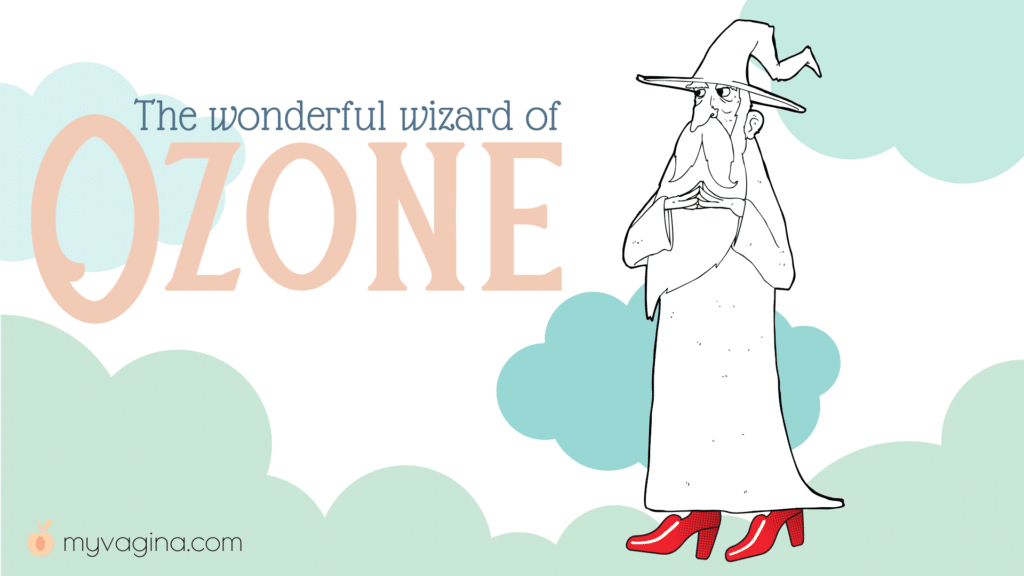Vaginal insufflation is a technique used to oxygenate vaginal, reproductive and body-wide tissue using ozone gas. Rectal insufflation may also be used in a similar way.
Ozone (O3) is a potent antifungal, antibacterial and antiviral, stimulates the immune system and supports healthy tissue healing.
Vaginal insufflation is a delivery system for ozone to treat disease and infection of biologically female reproductive organs and to deliver ozone through the blood to body tissues.
Ozone can also be delivered locally to the vagina using ozone-saturated oils or freshly ozonated water.
Pelvic ozone is used for:
- Acute and chronic inflammation of the vagina (colpitis)
- Cervicitis
- Bacterial vaginosis (BV)
- Human papillomavirus (HPV)
- Infertility
- Tubal occlusion
- Endometritis
- Vaginitis
- Ischemia (lack of oxygen) and oocyte (egg) loss in the ovaries
- Reducing the formation of pelvic adhesions
Vaginal ozone therapy has successfully treated:
Historical controversy of ozone
Ozone treatments are currently considered fringe by the medical community, despite the huge potential of ozone in a post-antibiotic-resistant world.
Ozone stability has been an issue in the past but has been addressed by ensuring specific concentrations of ozone are used in treatments.
What is vaginal insufflation?
Vaginal (or rectal) insufflation of ozone is a procedure whereby ozone is introduced into the vaginal (or anal) cavity, where it is absorbed via the epithelial cells and enters the bloodstream.
What is ozone?
Ozone has three oxygen molecules and is an intrinsically unstable molecule.
Ozone gas was discovered in 1840, but its use in medicine has come in and out of favour.
Ozone is highly water-soluble and it’s difficult to get high concentrations, with its interactions with water or itself transient. This transience has meant it’s been difficult to achieve high enough ozone saturation levels, and thus ozone has been difficult to assess therapeutically.
It is ozone’s naturally transient nature that has seen it be both considered a great treatment and a dangerous molecule. A good example is how ozone isn’t suitable for lung treatments.
The administrative route and concentrations make a difference in ozone’s therapeutic value, with the peroxide concentration requiring a middle ground of about 1500. Above 3000 or below 1000 and treatments become ineffective.
Ozone is modified when it reacts with other molecules to create more active elements, resulting in a cascade of responses. It interacts directly with fats, cell envelopes of bacteria, and viral capsids.
Ozone is or can potentially be therapy for:
- Acute and chronic illness
- Dentistry to treat jaw diseases
- Drinking water disinfectant
- Cystitis and urinary tract infection
- Sterilisation of medical instruments
- Tubal occlusion
- Endometriosis
- Vaginitis
- Ischemia (lack of oxygen) and oocyte (egg) loss in the ovaries
- Reduced formation of pelvic adhesions
Understanding ozone therapy
Ozone therapy induces moderate oxidative stress as it interacts with fats, increasing the production of antioxidants, routing oxygen through tissues and enhancing the immune response.
Ozone therapy has evidence of effective treatment across many systems of the body.
Techniques for vaginal insufflation
There are several routes of administration for ozone, with vaginal treatments limited currently to two: gas and infused olive oil.
Gas insufflation
Your practitioner cleans your vagina with an ozonised distilled water mixture. A clean, vegetable oil-lubricated tube (catheter or cannula) connects to an ozone generator. The gas is turned on and is allowed to enter the vaginal canal for between five and 30 minutes.
The recipient may feel discomfort, at which point they can stop – there is no reason to feel uncomfortable with the process. It can sometimes take some time to adjust.
Olive oil
High-quality infused oils are available to use directly on the vulva or vagina to treat vulvovaginal infections. Do not overuse.
If treating BV or aerobic vaginitis, refer to the guide inside the Killing BV support section for full instructions.
What to expect during and after treatments
Ozone is very drying to epithelial tissue, and so a lubricating and moisturising substance should be applied immediately after gas treatments to improve comfort. You may need 5-10 treatments, depending on the outcome.
You can expect to see an improvement in symptoms such as problematic discharge, odour, itching, discomfort and painful sex. You can use ozone with other drugs such as antibiotics.
Ozone safety
Use of ozone has safety implications, so ensure you are well informed of the therapy and insist anyone performing therapy is well-educated and has good tools.
Do not inhale ozone gas (lungs don’t like it).
You should avoid ozone therapy vaginally if you have:
- Bleeding from the vagina or cervix
- Large genital warts in the area
- Reproductive anatomical abnormalities or differences in development that prevent insertion of the speculum
- Favism (deficiency of enzyme glucose-6-phosphate dehydrogenase (G6PD)
- First trimester of pregnancy (though check with your doctor first)
- Some hyperthyroidism conditions
- Serious coagulation disorders
- With serious cardiovascular instability
- After drinking alcohol
- During haemorrhage
- While being treated with copper or iron
References
- International Scientific Committee of Ozone Therapy. Vaginal insufflation of an ozone-oxygen mixture (VIO3O2M) ISCO3 MET/00/13. SOP: ISCO3/MET/00/13 Version: 1 Date: 13/06/2016 (PDF)
- Merhi Z, Garg B, Moseley-LaRue R, Moseley AR, Smith AH, Zhang J. Ozone therapy: a potential therapeutic adjunct for improving female reproductive health. Med Gas Res. 2019;9(2):101–105. doi:10.4103/2045-9912.260652
- Smith NL, Wilson AL, Gandhi J, Vatsia S, Khan SA. Ozone therapy: an overview of pharmacodynamics, current research, and clinical utility. Med Gas Res. 2017;7(3):212–219. Published 2017 Oct 17. doi:10.4103/2045-9912.215752
- Uysal B. Ozonated olive oils and the troubles. J Intercult Ethnopharmacol. 2014;3(2):49–50. doi:10.5455/jice.20140314090801

Get a fresh perspective with a qualified, experienced vulvovaginal specialist naturopath.
This product has multiple variants. The options may be chosen on the product page
The most comprehensive vaginal microbiome test you can take at home, brought to you by world-leading vaginal microbiome scientists at Juno Bio.

Promote and support a protective vaginal microbiome with tailored probiotic species.







